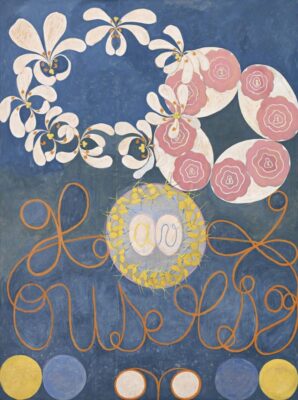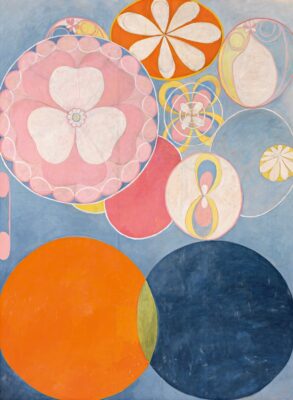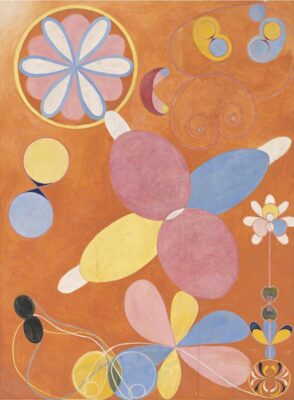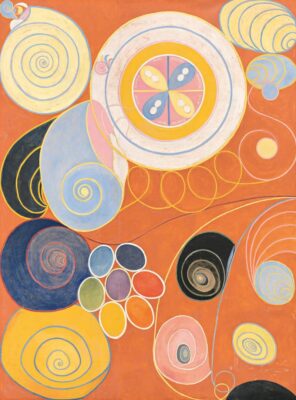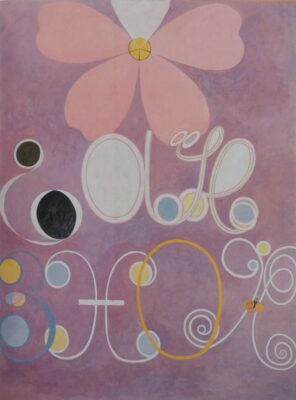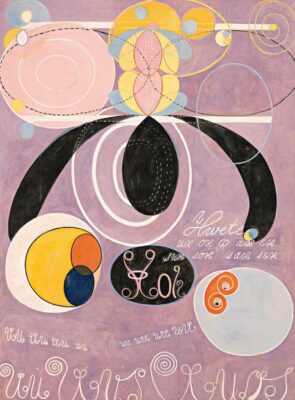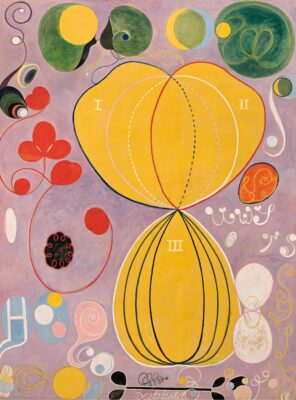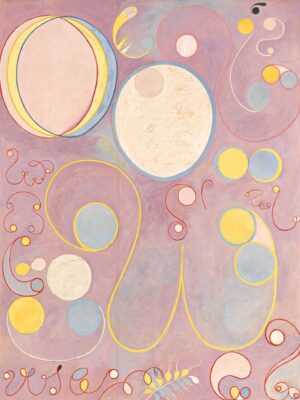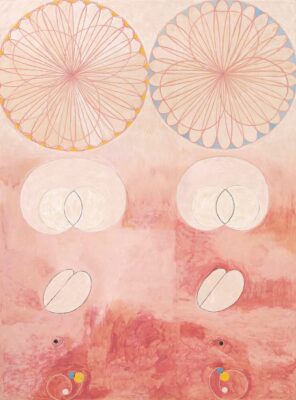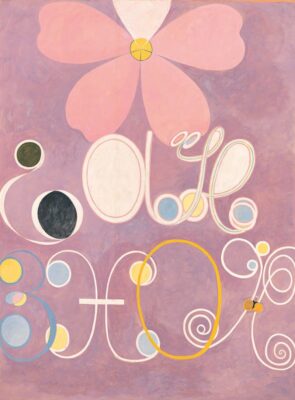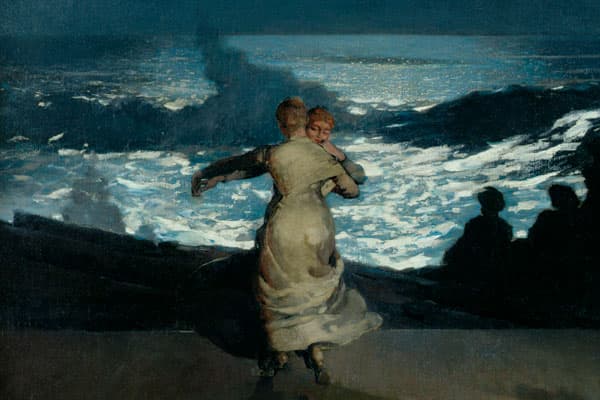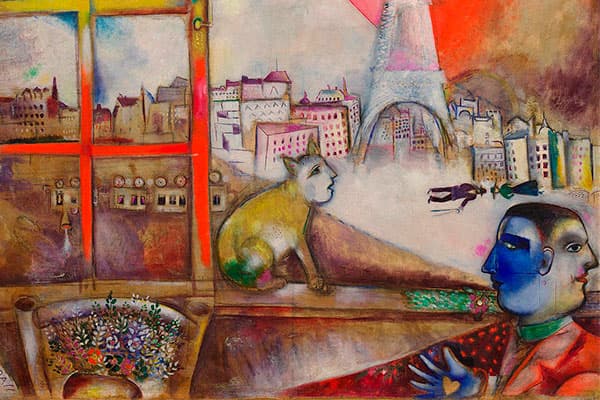Hilma af Klimt · The Ten Largest
1907 – Oil on canvas, 328 x 240 cm (each)
Images: the ten paintings that make up the series “The Ten Largest”: “The Ten Largest, no. 1: childhood”, “The Ten Largest, no. 2: childhood”, “The Ten Largest, no. 3: youth”, “The Ten Largest, no. 4: youth”, “The Ten Largest, no. 5: adulthood”, “The Ten Largest, no. 6: adulthood”, “The Ten Largest, no. 7: adulthood”, “The Ten Largest, no. 8: adulthood”, “The Ten Largest , no. 9: old age”, “The Ten Largest, no. 10: old age”.
The Swedish artist Hilma af Klint (1862-1944) is an exceptional case in modern painting. From 1906 onwards, her interest in spiritualism led her to create a series of paintings whose genesis is similar to the automatic writing and drawing that Klint and several friends practised during their séances. It is possible that these mystical-themed works (with names such as “Primordial Chaos“, “Seven-pointed Star”, etc.) constitute the first attempt to represent a reality other than the observable, at least in the European tradition, and are therefore the first examples of modern abstract art, years before artists such as Kandinsky or Delaunay presented their paintings. Nonetheless, her work remained hidden for decades and, at the artist’s own request, was not exhibited until years after her death, although some authors have suggested that Kandinsky may have seen her paintings in 1908.
In the words of researcher Marco Pasi, “Much of the debate concerning the historical significance [of Klint’s work] has revolved around the question of whether the artist developed an abstract style of painting before the artists who have traditionally been regarded as the initiators of this style (…) However, it seems that the most important thing is not to decide which artist was the first to produce abstract images, (…) but how an artist in Af Klint’s situation (who was relatively marginal, both geographically and personally) was able to develop a new visual style“.
The series of “The Ten Largest” are Hilma af Klint’s most ambitious works. They are sublime, abstract and monumental studies of human life, depicting the passage from childhood to old age. Painted in 1907, the same year in which Picasso presented “Les Demoiselles d’Avignon“, this series of works, which could be admired together in a series of exhibitions in the 21st century, together form an impressive journey into the subconscious of a mysterious and isolated artist, but one who, a century later, art history is beginning to place in her rightful place.
Texto: G. Fernández, theartwolf.com
Follow us on:

